Chiavari hosts three sanctuaries: Nostra Signora delle Grazie (Our Lady of Grace), Nostra Signora dell’Ulivo (Our Lady of the Olive Tree) in Bacezza and the most important one of all Nostra Signora dell’Orto (Our Lady of the Garden).
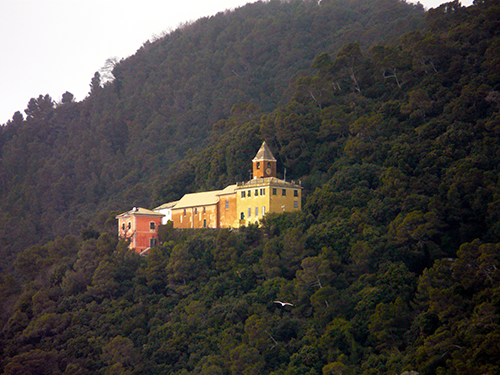 Nostra Signora delle Grazie. In a spectacular position along the Via Aurelia, on the cliff overlooking the sea, this sanctuary preserves an invaluable artistic heritage. The complex is composed of a hospice for pilgrims and one older chapel, dating back to the 18th century, and the splendid church decorated with frescoes by Teramo Piaggio and Luca Cambiaso, made between 1539 and 1550 and representing the Stories of the life of the Virgin and the Passion of Christ. The church houses the miraculous wooden statue of the Madonna, handcrafted in Flanders, brought to the sanctuary in 1416 by a Chiavarese captain, whose ship refused to leave the port of the city where the statue was for sale until the captain bought it.
Nostra Signora delle Grazie. In a spectacular position along the Via Aurelia, on the cliff overlooking the sea, this sanctuary preserves an invaluable artistic heritage. The complex is composed of a hospice for pilgrims and one older chapel, dating back to the 18th century, and the splendid church decorated with frescoes by Teramo Piaggio and Luca Cambiaso, made between 1539 and 1550 and representing the Stories of the life of the Virgin and the Passion of Christ. The church houses the miraculous wooden statue of the Madonna, handcrafted in Flanders, brought to the sanctuary in 1416 by a Chiavarese captain, whose ship refused to leave the port of the city where the statue was for sale until the captain bought it.
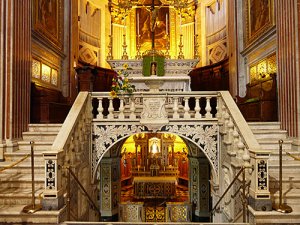 Nostra Signora dell’Ulivo in Bacezza, which is significantly one Roman mile from the Santuario delle Grazie, was built around the devotion to a Byzantine-like image. According to tradition, this miraculously appeared among the branches of an olive tree, lighting up a night of the year 936 AD. Today, the building maintains a primarily 19th-century appearance and the miraculous image is preserved in the spectacular crypt.
Nostra Signora dell’Ulivo in Bacezza, which is significantly one Roman mile from the Santuario delle Grazie, was built around the devotion to a Byzantine-like image. According to tradition, this miraculously appeared among the branches of an olive tree, lighting up a night of the year 936 AD. Today, the building maintains a primarily 19th-century appearance and the miraculous image is preserved in the spectacular crypt.
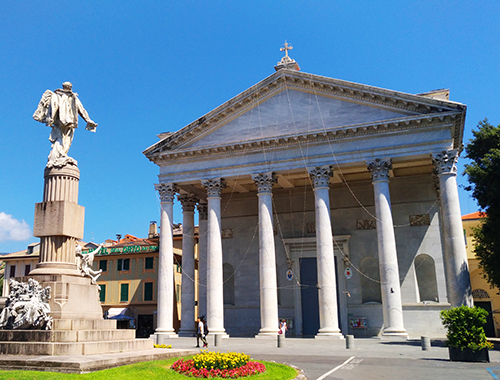
There are two sanctuaries near Chiavari:
Nostra Signora dell’Orto is linked to the story of an apparition of the Virgin: in 1493, an image of the Madonna with Child was painted on a kitchen garden wall, in an area that was then outside the walls of the village. The Madonna was soon credited with miraculous powers, particularly during the plague of 1528. On 2 July 1610, the Virgin appeared to the peasant Sebastiano Descalzo near that very image, giving rise to a profound devotion, which led to the erection of the splendid sanctuary, later transformed into a bishop’s see.
The DIOCESAN MUSEUM
The natural completion of any building is the furniture – furniture, objects, furnishings. The patron families – the counts of Lavagna – or the local communities, related to them, decorated the buildings with beautiful valuable works, some of which are now preserved and displayed in the Diocesan Museum of Chiavari.
Two pieces of great importance come from Moneglia: a casket of Limousin production dating back to the 13th century with angels in medallions in polychrome enamels, part of the liturgical furnishings from Santa Croce Church and the canvas of Madonna with Child from the Oratorio dei Disciplinanti, attributed to the mid-14th century and flanked by fragments of two saints and those of a praying man or client. The Polyptych of San Lorenzo is linked to San Lorenzo Church in Cogorno, dated 1492, the work of an unknown painter close to Braccesco and Foppa.
From the Fieschi family “basilica” there came a 16th century chalice of an essential form with an abraded coat of arms, marked with a turret and with the initials of the Genoese ravego – L. V. – perhaps the same who participated in the creation of the Corpus Domini chest for the cathedral of Genoa.
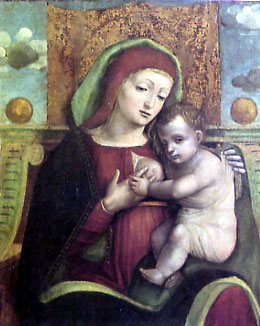
Another two important pieces came from San Giovanni Battista Church in Chiavari, founded by Bardo Fieschi: a panel with Madonna and Child (c. 1360-1380) by a Ligurian artist influenced by Sienese painting, who in the gesture of the Child who touches his foot anticipates an iconography which became widespread but limited within the Ligurian borders, and a second panel, Madonna with Child, by Bernardino Fasolo – son of Lorenzo – dated 1512, a family of artists linked by numerous commissions to the clan of the Counts of Lavagna.
Finally, it is here that today one of the most precious objects belonging to the Lavagnina family, for the multiple meanings it contains, is preserved: the Cross-reliquary of Innocent IV. It is actually a pectoral cross with the relic of the True Cross – used by the pontiff – and later mounted on a gilded silver support attributable to Genoese manufacture of the sixteenth century. The original cross – a Cross of Lorraine – is made of rock crystal and finished in gilded silver. Recent research, which attributed the original custody to a Constantinopolitan production of the first half of the 9th century, suggests that the precious artefact was from the same place and time. An object – donated to San Salvatore Church, apparently by Innocent IV himself, with many symbolic meanings. It holds the most important relic for the Christian world. It was once the pectoral cross of a pope, it is of ancient production and comes from the place where – by tradition – the “real relics” come from.
Important Churches
The Church of Nostra Signora dell’Orto, the city’s cathedral, whose cult, typically Chiavarese, is connected to the story of an apparition of the Virgin described above.
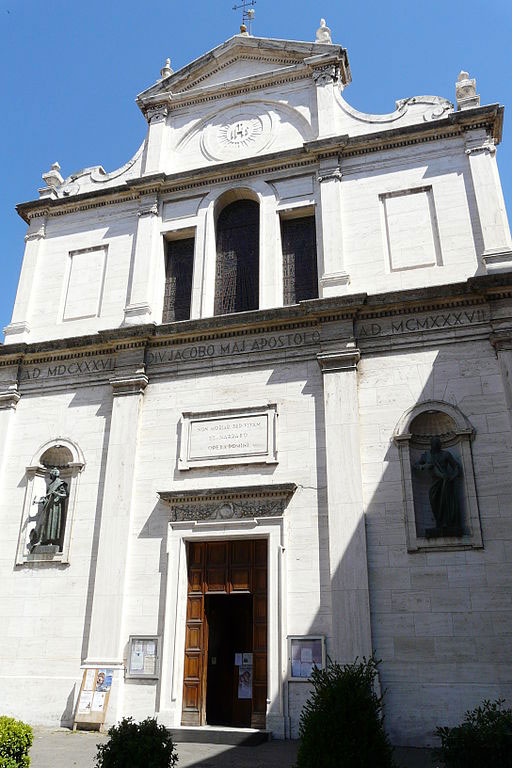 San Giacomo di Rupinaro Church. Founded around the year 1000, in the Middle Ages it was called San Giacomo de Arena, as it was located on the coast which then occupied the current Corso Millo road. It stood on a pilgrimage route to Santiago de Compostela. It did in fact have a hostel (no longer existing) and from the fourteenth century to the end of the eighteenth it was entrusted to the Knights of St. John of Jerusalem, whose main functions included assistance to pilgrims. The building was rebuilt in 1637 and in 1937 the modern facade was built.
San Giacomo di Rupinaro Church. Founded around the year 1000, in the Middle Ages it was called San Giacomo de Arena, as it was located on the coast which then occupied the current Corso Millo road. It stood on a pilgrimage route to Santiago de Compostela. It did in fact have a hostel (no longer existing) and from the fourteenth century to the end of the eighteenth it was entrusted to the Knights of St. John of Jerusalem, whose main functions included assistance to pilgrims. The building was rebuilt in 1637 and in 1937 the modern facade was built.
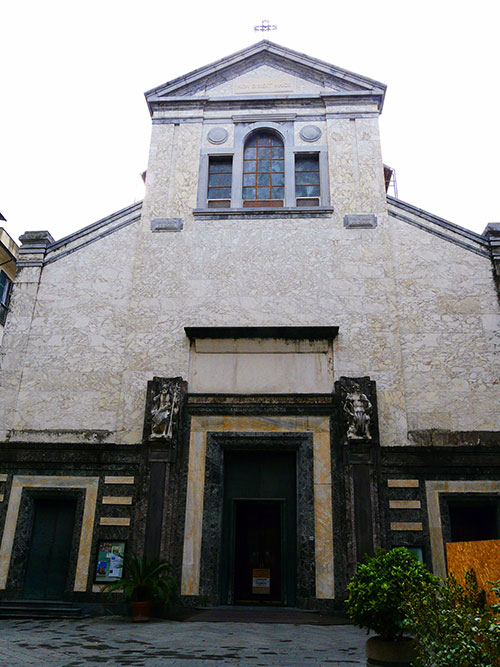
San Giovanni Battista Church. In the Middle Ages, Piazza di San Giovanni was the only one inside the medieval village. The church of the same name, Palazzo del Podestà (moved to the Citadel at the beginning of the 15th century) and the homes of the Ravaschieri family (along the street that took their name) all overlooked the square. The church stands on the ruins of a chapel founded, according to tradition, around 1182 by the archpriest of Lavagna Bardo Fieschi. In the years 1462-68, the master Bernardo Giovanni di Luma from Como coordinated the first restoration of the building, later (1624) renovated by Andrea Ceresola, known as il Vannone, architect of the Republic of Genoa. On that occasion, the noble Costaguta family commissioned Bartolomeo Bianco to build the apse, which contains the tombs of some members of the family. The modern facade was built in 1935 based on a design by the architect Gaetano Moretti.
Inside, there are works by Bernardino Fasolo (15th century), Gian Battista Carlone, Domenico Piola, Orazio De Ferrari, Domenico Fiasella (17th century), Giuseppe Galeotti (18th century) and a wooden cross by Antonio M. Maragliano.
The Shrine, former San Francesco Church, now Auditorium. This was built in 1631 by the sculptor Giuseppe Ferrandino commissioned by Achille Costaguta, who wanted to place it in the chapel inside San Francesco Church. At an unknown time and for unknown reasons, it was then moved to the outside. In 2001, it was restored by the Chiavari Host Lions Club.




















